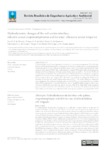Use este identificador para citar ou linkar para este item:
http://www.alice.cnptia.embrapa.br/alice/handle/doc/1066153Registro completo de metadados
| Campo DC | Valor | Idioma |
|---|---|---|
| dc.contributor.author | MORAIS, J. E. F. de | pt_BR |
| dc.contributor.author | SILVA, T. G. F. da | pt_BR |
| dc.contributor.author | QUEIROZ, M. G. de | pt_BR |
| dc.contributor.author | ARAUJO, G. G. L. de | pt_BR |
| dc.contributor.author | MOURA, M. S. B. de | pt_BR |
| dc.contributor.author | ARAÚJO JÚNIOR, G. do N. | pt_BR |
| dc.date.accessioned | 2017-03-06T11:11:11Z | pt_BR |
| dc.date.available | 2017-03-06T11:11:11Z | pt_BR |
| dc.date.created | 2017-03-06 | pt_BR |
| dc.date.issued | 2017 | pt_BR |
| dc.identifier.citation | Revista Brasileira de Engenharia Agrícola e Ambiental, v. 21, n. 4, p. 273-278, 2017. | pt_BR |
| dc.identifier.uri | http://www.alice.cnptia.embrapa.br/alice/handle/doc/1066153 | pt_BR |
| dc.description | The knowledge on soil water dynamics is the basis of crop water management. The soil water balance (SWB) method is used for this purpose. However, its application in cactus may lead to misinterpretation in water efficiency analysis, since it does not consider the amount of water retained in the plant (WRP). This study aimed to evaluate SWB applicability, hydrodynamic changes and water efficiency of forage cactus clones under irrigation. The clones ?Orelha de Elefante Mexicana? (OEM), ?IPA Sertânia? (IPA) and ?Miúda? (MIU) were submitted to irrigation depths (2.5, 5.0 and 7.5 mm) and frequencies (7, 14 and 28 days), in Serra Talhada, PE, Brazil, between March 2012 and August 2013. The SWB was applied, by adding the WRP in the estimate of the effective actual evapotranspiration (ETrEF). The water efficiency indicators were calculated. The actual evapotranspiration on SWB (ETrSWB) overestimated ETrEF and, like other SWB components, it was affected by the factors irrigation depth, frequency and clone. The clone OEM is the most efficient, due to the use of the WRP, while MIU leads to highest gross economic returns for sale of cladodes as seed. As conclusion, the application of the soil water balance method in areas cultivated with cactus species must be accompanied by WRP. | pt_BR |
| dc.language.iso | por | pt_BR |
| dc.rights | openAccess | pt_BR |
| dc.subject | Cactos forrageiros | pt_BR |
| dc.subject | Cactáceas | pt_BR |
| dc.subject | Modelagem | pt_BR |
| dc.subject | Eavpotranspiração | pt_BR |
| dc.subject | Cactus | pt_BR |
| dc.subject | Water retained in the plant | pt_BR |
| dc.title | Hydrodynamic changes of the soil-cactus interface, effective actual evapotranspiration and its water efficiency under irrigation. | pt_BR |
| dc.type | Artigo de periódico | pt_BR |
| dc.date.updated | 2017-03-29T11:11:11Z | pt_BR |
| dc.subject.thesagro | Solo | pt_BR |
| dc.subject.thesagro | Balanço hídrico | pt_BR |
| dc.subject.thesagro | Meteorologia | pt_BR |
| dc.subject.thesagro | Retenção de Água no Solo | pt_BR |
| dc.subject.nalthesaurus | Soil water balance | pt_BR |
| riaa.ainfo.id | 1066153 | pt_BR |
| riaa.ainfo.lastupdate | 2017-03-29 | pt_BR |
| dc.identifier.doi | 10.1590/1807-1929/agriambi.v21n4p273-278 | pt_BR |
| dc.contributor.institution | JOSÉ E. F. DE MORAIS, Universidade Federal Rural de Pernambuco; THIERES G. F. DA SILVA, Universidade Federal Rural de Pernambuco/Unidade Acadêmica de Serra Talhada. Serra Talhada, PE; MARIA G. DE QUEIROZ, Universidade Federal de Viçosa; GHERMAN GARCIA LEAL DE ARAUJO, CPATSA; MAGNA SOELMA BESERRA DE MOURA, CPATSA; GEORGE DO N. ARAÚJO JÚNIOR, Universidade Federal Rural de Pernambuco/Unidade Acadêmica de Serra Talhada. Serra Talhada, PE. | pt_BR |
| Aparece nas coleções: | Artigo em periódico indexado (CPATSA)  | |
Arquivos associados a este item:
| Arquivo | Descrição | Tamanho | Formato | |
|---|---|---|---|---|
| Magna20171.pdf | 369,73 kB | Adobe PDF |  Visualizar/Abrir |









